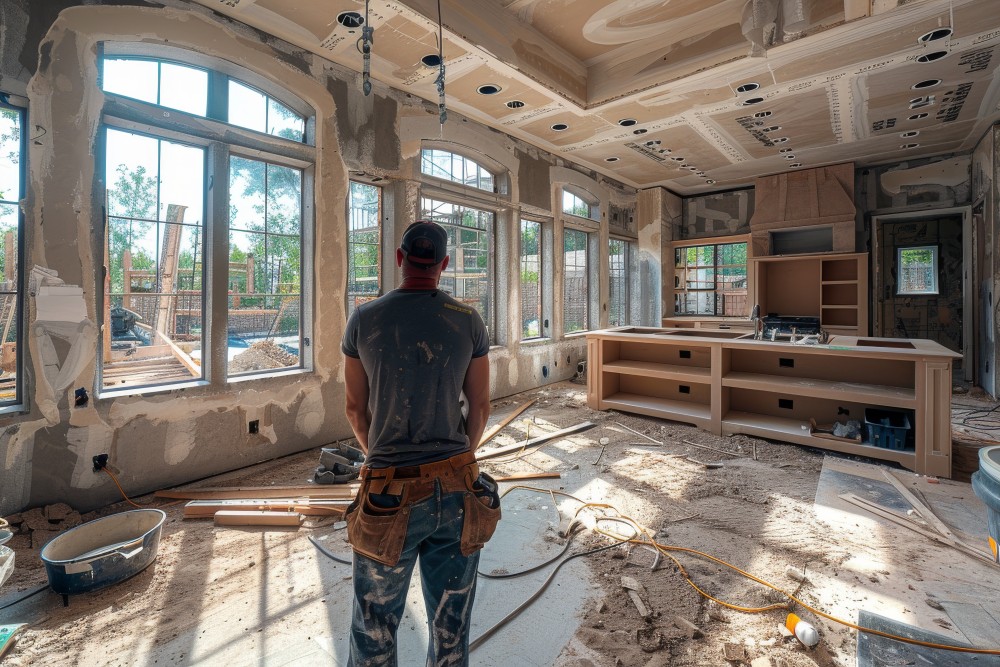1. Seasonal Considerations
Spring and Summer
- Pros: Warm weather, longer daylight hours, and generally dry conditions make spring and summer ideal for most types of renovation projects.
- Cons: The peak season for construction can lead to higher costs and less availability of contractors. Sudden summer storms and extreme heat can also cause delays and safety concerns.
Fall
- Pros: Cooler temperatures and stable weather conditions make fall another good season for renovations. It’s often easier to schedule contractors during this time.
- Cons: Shorter days and the potential for early snowfall in some regions can impact project timelines.
Winter
- Pros: Lower demand for contractors can result in more competitive pricing and better availability. Indoor projects can proceed without much disruption.
- Cons: Cold temperatures, snow, and ice can cause significant delays and increase the complexity of outdoor projects. Heating costs for temporary shelters and materials can also rise.
Join HICP Homeowner’s Alliance
Connect with experts, get special discounts and enjoy member benefits
2. Effects of Weather on Renovation Projects
Rain and Humidity
- Delays: Rain can halt outdoor work, delay deliveries, and make excavation and foundation work difficult.
- Material Damage: High humidity and rain can damage materials such as wood and drywall, leading to warping, mold growth, and other issues.
- Site Conditions: Muddy conditions can make it challenging to move equipment and materials around the site.
Heat and Sun
- Worker Safety: High temperatures can pose health risks to workers, such as heat exhaustion and dehydration, leading to reduced productivity.
- Material Handling: Some materials, such as paint and concrete, can be adversely affected by extreme heat, impacting their application and curing processes.
- Scheduling: Work may need to be scheduled for early mornings or late afternoons to avoid peak heat.
Cold and Snow
- Material Handling: Cold weather can make some materials brittle and challenging to work with. Concrete and mortar may not cure properly if temperatures drop too low.
- Site Access: Snow and ice can make it difficult to access the site, causing delays in deliveries and work progress.
- Increased Costs: Heating and covering work areas to keep materials and workers warm can increase project costs.
Wind
- Safety Risks: High winds can pose significant safety risks, making it dangerous to work with large materials or operate cranes and other equipment.
- Material Damage: Wind can blow debris around the site and damage materials not adequately secured.
- Schedule Disruptions: Windy conditions can force work stoppages, particularly for tasks requiring precision and stability.
3. Planning and Mitigation Strategies
Flexible Scheduling
- Buffer Time: Build buffer time into your project schedule to account for potential weather-related delays. This flexibility can help prevent rushed work and maintain quality.
- Seasonal Planning: Plan your project around the most favorable weather conditions for your area. For example, schedule indoor work during winter and outdoor projects for spring and summer.
Protective Measures
- Material Storage: Store materials in weather-protected areas to prevent damage from rain, humidity, and extreme temperatures.
- Temporary Shelters: Use temporary shelters, tarps, and heating equipment to protect work areas and materials from adverse weather conditions.
- Drainage Solutions: Implement proper drainage solutions on the site to manage rainwater and prevent flooding and erosion.
Safety Precautions
- Weather Monitoring: Regularly monitor weather forecasts and prepare for adverse conditions. Adjust work schedules and activities accordingly.
- Worker Safety: Ensure workers have access to appropriate clothing, hydration, and shelter to manage extreme weather conditions. Implement safety protocols for working in heat, cold, and high winds.
- Equipment Care: Protect and maintain equipment to ensure it operates correctly in varying weather conditions.
Communication and Coordination
- Contractor Agreements: Include weather-related clauses in your contracts to outline how delays and additional costs will be managed.
- Regular Updates: Maintain open communication with your contractor and project team about weather forecasts and potential impacts on the schedule.
- Contingency Plans: Develop contingency plans for dealing with severe weather, such as alternative work activities or rescheduling non-critical tasks.
4. Specific Weather Considerations
Storms and Severe Weather
- Emergency Preparedness: Have an emergency plan in place for severe weather events, including securing the site and ensuring worker safety.
- Insurance: Verify that your insurance covers weather-related damages and delays. Understand the coverage and claims process for weather-related incidents.
Seasonal Transitions
- Adjusting Activities: Plan for the transition between seasons by scheduling tasks that can be affected by weather conditions appropriately. For example, complete roofing before the rainy season and interior work during colder months.
- Maintenance: Regularly maintain and inspect the site to address weather-related wear and tear, such as clearing snow, maintaining drainage systems, and checking for water damage.
Conclusion
Weather can significantly impact home renovation projects, influencing timelines, costs, and the quality of work. By understanding the effects of different weather conditions and implementing effective planning and mitigation strategies, you can minimize disruptions and ensure your project stays on track. Flexible scheduling, protective measures, safety precautions, and clear communication with your contractor are essential to navigating weather-related challenges and achieving a successful home renovation.



















